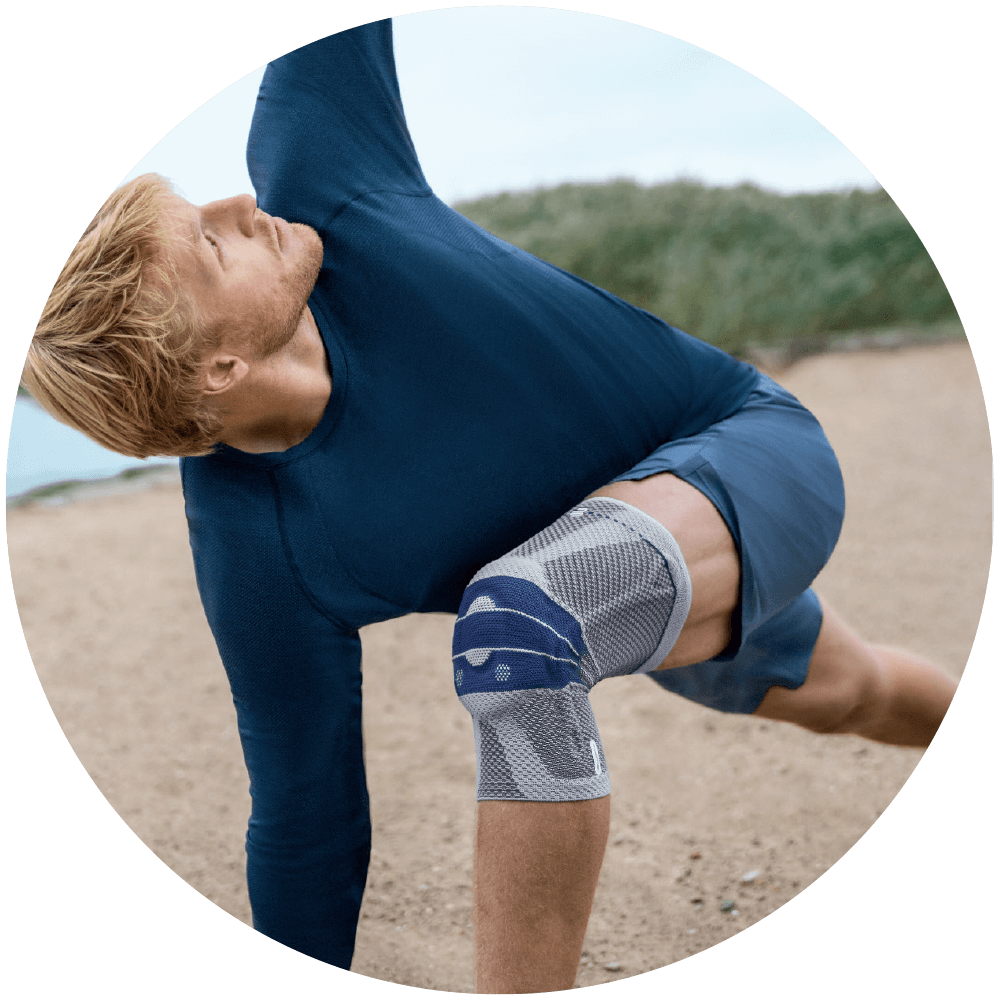Secure and stabilize your knee with GenuTrain S
Is your knee swollen and feels “locked”? Then it is likely that fluid has accumulated in or around your knee joint. The reason for this may be knee joint effusion or water in the knee. This can be caused by an acute injury or underlying condition.
With early, proactive treatment, you should quickly be back on your feet. Home remedies can help to reduce pain and swelling of the knee in most cases. However, if the swelling persists for more than a few days, or your knee gets red or hot to the touch, seek the advice of a medical professional right away. This article tells you more about treating your swollen knee, which knee support is best, and provides tips for preventing re-occurrence.
GenuTrain® Knee Brace
Knee Support for pain and swelling.
The new-and-improved GenuTrain provides secure support and relief from knee pain and swelling. With a new pain relieving Omega+ pad, GenuTrain provides targeted stimulation to areas of the knee that influence proprioception and mobility. Its anatomically contoured design with soft knitted fabric provides gentle massage and medical-grade compression with every movement, activating the body’s natural metabolic response to pump out swelling and inflammation. GenuTrain is soft, breathable and moisture-wicking for all-day wearing comfort.
Treatment options for a swollen knee
The R.I.C.E (Rest, Ice, Compression, Elevation) method helps reduce swelling, ease pain and speed up healing.
REST – Give your body time to heal! While resting, your body can devote energy to repairing itself and you can hopefully avoid turning a small injury into a bigger one by reinjuring yourself.
ICE – Cold compress constricts the blood vessels, which will reduce pain, swelling and inflammation. However, it can also reduce healing agents in the blood from coming to the area in response to your injury. For this reason, ice has become more controversial recently. Most health care professionals still believe icing for 10-15 minutes, 3-5 times a day will help acute (fresh) injuries. Just make sure to wrap your ice pack in a thin layer of protection to avoid potential frost bite.
COMPRESSION – Applying a medical-grade compression knee support like the GenuTrain provides a gradient compression that is firmest farthest away from the body and slowly loosens as it nears the body. This design not only keeps swelling down but also increases blood flow — pumping away edema faster so the body can start its healing process.
ELEVATION – Raising the injured area above the heart will encourage swelling to follow gravity and head back to the central body, where it can be reabsorbed.
Nearly 2/3 of patients experience less pain with the GenuTrain Knee Brace.
Source: Schween R, Gehring D, Gollhofer A (2015) Immediate Effects of an Elastic Knee Sleeve on Frontal Plane Gait Biomechanics in Knee Osteoarthritis.

Comfortable to Wear
Skin-friendly knee support made of breathable knit material

Perfect Fit
Available in 13 sizes and suitable for right or left knee

Low-Profile
Lightweight, low-profile design, can be worn under pants
How to prevent the swelling of your knees from re-occurring?
- Wear a knee support – for better proprioception, to stabilize and massage your knee joint while being active
- Exercise regularly – strengthen the muscles around your knee to ease pressure and stabilize the knee joint
- Manage your weight – to keep the stress on your joints low
- Conquer chronic stress – with meditation and yoga to balance your body
- Eat healthy – anti-inflammatory foods can help to suppress inflammation in the body





